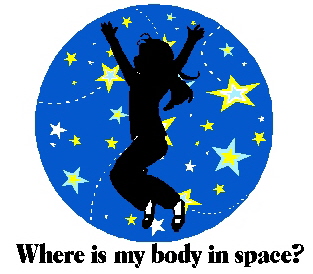Overview
The five senses of vision, hearing, touch, taste, and smell are familiar. However, people have three more senses that are critical to everyday life –vestibular, or sense of balance; proprioceptive, or sense of where one is in space; and interoceptive, or the body’s sense of what is going on internally. Although those senses are not as familiar, they are necessary to optimal functioning.
Vision and Hearing
The visual system includes the eyes and the occipital lobe of the brain. The eyes process stimuli from light in a complex relationship between special cells and nerves. Connections between the eyes and the brain allow people and animals to make sense of the landscape, to recognize what is being seen, and to detect features and movement. The auditory or hearing system includes the ears and parts of the brain that are critical to hearing, such as the primary auditory cortex in the temporal lobe of the brain. Just as light can be perceived in hue, brightness, and saturation, sound can be perceived as pitch, loudness, and timbre (the type of the sound).
Taste, Smell, and Touch
There are only four qualities of taste; bitter, sour, salty, and sweet. Taste buds in the tongue are most sensitive to those separate qualities, which depend on chemicals in the food substances. People and animals learn to distinguish between them. Areas of the brain responsible for processing taste information include specific parts of the medulla. Smell is also a chemical sense, and the primary organ of smell is within the nose. Specific areas within the brain include the amygdala, neocortex, and hippocampus in the base of the brain. Taste and smell are closely related, which is why food tastes so bland when the nose is stopped up with a cold. Touch, in contrast, involves the body’s largest organ, the skin. Elements of touch include touch, pressure, temperature, and pain. The brain and spinal cord process tactile, or touch, information from many different places, including the parietal lobe, the thalamus, and multiple locations along the spinal cord and cranial nerves.
Vestibular
The vestibular system includes systems that control balance, keeping the head upright, and adjustment of eye movement to compensate for head movements. (Think of the eye movements of a dancer pirouetting across the stage. She keeps her eyes focused on the same point to prevent becoming dizzy as she turns.) It consists of the semicircular canals and the vestibular sacs. Those systems connect with specific cranial nerves and parts of the brain, such as the cerebellum, medulla, and spinal cord.
Proprioceptive and Interoceptive
The proprioceptive sense is the way the body senses the position, location, orientation, and movement of muscles and joints. Sensory information comes from connections between the inner ear with special receptors in every muscle and joint in the body. That sensory input travels to areas in both the cerebrum and cerebellum. Interoceptive senses involve the way that processes are coordinated within the body, such as hunger, thirst, and many other feelings necessary to life. Scientists have identified many other senses which are not as well-known as these eight, and some have suggested that people may have as many as 39 separate senses.
Interested in science tutoring services? Learn more about how we are assisting thousands of students each academic year.
SchoolTutoring Academy is the premier educational services company for K-12 and college students. We offer tutoring programs for students in K-12, AP classes, and college. To learn more about how we help parents and students in Mount Juliet, TN visit: Tutoring in Mount Juliet, TN




